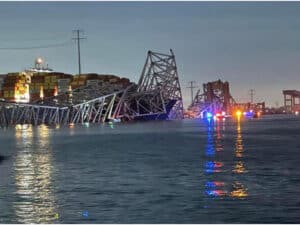
BOEM Gulf of Mexico oil and gas sale restrictions face legal challenge
Written by Nick Blenkey
Image: BOEM
While the Bureau of Ocean Energy Management may be all in on offshore wind, that’s not the case with oil and gas. On August 23, BOEM announced plans to hold Gulf of Mexico Oil and Gas Lease Sale 261 on September 27. The Final Notice of Sale covered significantly reduced acreage than announced in the proposed notice of sale announced back in March (67 million acres as opposed to 73.4 million). It also placed severe restrictions on oil and gas vessel traffic.
On August 24, the American Petroleum Institute (API) joined with the State of Louisiana and Chevron U.S.A. Inc. in filing a challenge to BOEM’s Final Notice of Sale for Lease Sale 261.
“Today we’re taking steps to challenge the Department of the Interior’s unjustified actions to further restrict American energy access in the Gulf of Mexico,” said API senior vice president and general counsel Ryan Meyers. “Despite Congress’ clear intention in the Inflation Reduction Act, the Biden administration has announced a ‘lease sale in name only’ that removes approximately 6 million acres of the Gulf of Mexico from the sale and adds new and unjustified restrictions on oil and natural gas vessels operating in this area, ignoring all other vessel traffic. Together with the State of Louisiana and Chevron U.S.A. Inc., we intend to use every legal tool at our disposal to challenge these actions.”
In a backgrounder, API says:
For 45 years, the Interior Department has been required to prepare a five-year offshore leasing program that will best meet America’s energy needs for the ensuing five-year period, detailing a schedule for regular oil and natural gas lease sales, including in the Gulf of Mexico.
It has been more than one year since the Department of the Interior allowed the five-year program for federal offshore oil and natural gas leasing to lapse with no immediate replacement.
The U.S. Gulf of Mexico produces some of the lowest carbon intensity barrels in the world. Constrained production in this basin could be replaced by higher carbon intensity barrels from elsewhere in the world.
According to the U.S. EIA, Gulf of Mexico federal offshore oil production accounts for 15% of total U.S. crude oil production and federal offshore natural gas production in the Gulf accounts for 5% of total U.S. dry production.
Over 47% of total U.S. petroleum refining capacity is located along the Gulf coast, as well as 51% of total U.S. natural gas processing plant capacity.
An agreement announced last month [and condemned by API, the National Ocean Industries Association and the global EnerGeo Alliance] proposed operating “recommendations” that would impose significant burdens on operators and increase emissions from vessels forced to operate at suboptimal speeds or idle outside the restriction areas.
Adopting the nighttime and low visibility restrictions could cut transit windows to approximately 50%– requiring industry to balance the government’s recommended practices against safely and efficiently servicing ongoing operations.
These restrictions would unfairly single out oil and gas traffic in an area that is one of the most used maritime areas in U.S. waters by a variety of industries. Thousands of vessels pass through this area every day.




